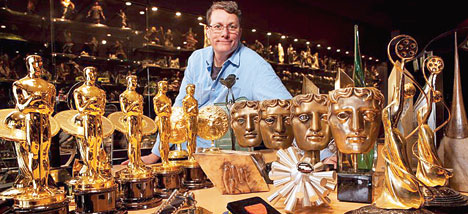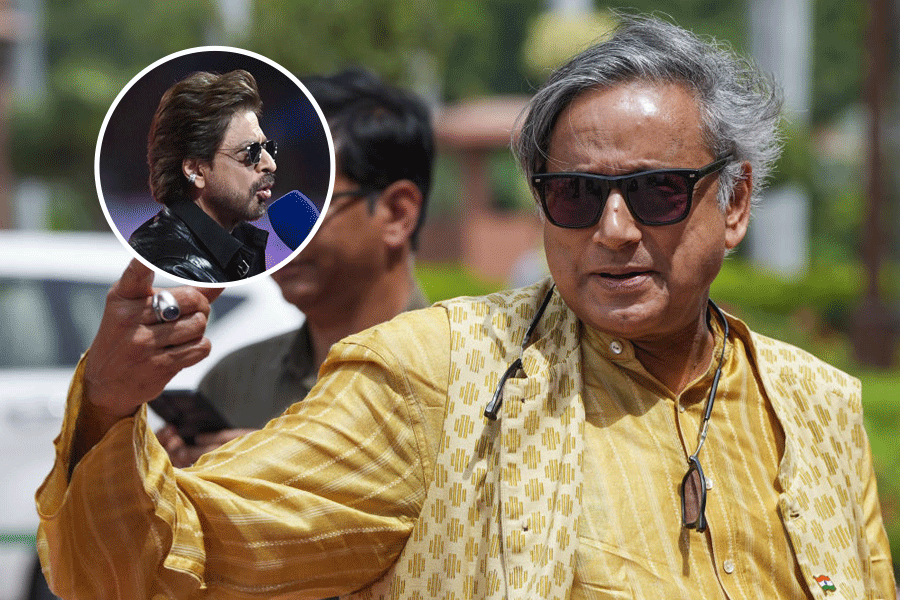
He’s been the man who’s created the wondrous worlds of The Lord of the Rings and The Hobbit, Avatar and The Adventures of Tintin. Peter Jackson to James Cameron, he’s worked with some the world’s pioneering filmmakers. And yes, he’s won five Oscars! Richard Taylor — the head of Weta Workshop, a New Zealand-based design studio and manufacturing facility servicing the world’s biggest entertainment and creative industries — has broken new ground in the spheres of SFX and make-up, costume and prop, ever since he started his facility 28 years ago.
On a rainy afternoon, t2 popped in at the Weta Cave — that houses the Weta Workshop — in the Kiwi capital of Wellington to chat with Taylor on his work and the worlds he creates.
The Weta Workshop is one of the leading creative workshops in the world. Where did it all start for you?
I grew up in rural New Zealand, in a place called Te Hihi and I always wanted to make things with my hands. My parents wanted me to pursue something in the technical field, but secretly, I would always build models and I taught myself to sculpt. I had seen Star Wars, but I wasn’t bitten by the film bug. Going to see a film was quite an undertaking because of where I lived, there were hardly any film magazines and no Internet, of course. It wasn’t until my late teens that I discovered the film industry. I got a small job at a very small television studio in Wellington. I was so lacking in knowledge that I actually thought that TV shows were shot in people’s houses… I had no idea about the concept of sets!

Your work with Peter Jackson is counted among your best. What would you count as your best experience on a Peter Jackson set?
It would be the first film we did with him… Meet The Feebles (1989) and it was a $750,000 film. It was made in a rundown, flea-ridden railway shed, but everyone was in it together and we all felt we were at the beginning of something special. My wife (Tania) and I were very young and were excited to be involved in something so unique. If Peter heard me mention Meet The Feebles, he would probably roll his eyes! (Laughs) For some reason, I still so fondly remember that experience… turning up every day and working in that shed… just real, grassroots-style of filmmaking.
The one I’m most proud of is the trilogy of The Lord of The Rings because we took on a fair amount of departments. We had 158 crew, of which only 38 had ever worked on a film or TV show before. We made 48,000 different props and costumes for those three films over seven years!

What’s the collaborative process with Peter Jackson like?
Both Peter Jackson and James Cameron are immensely collaborative directors and they both know the collective awareness of a group of people working together is greater than their singular knowledge or view. They are open to ideas, thoughts and interpretations and they know that the director may not be the greatest expert on the subject matter. On The Lord of the Rings, we had a designer called Daniel Faulkner who was arguably one of the world’s biggest experts on Middle-earth. He became an encyclopaedic source of knowledge for Peter. He wrote the bios for all the actors as well as made the Trivial Pursuit game for Middle-earth. For Peter, his primary source of inspiration come from Alan Lee and John Howe, who have designed the world of Middle-earth… their vision and interpretation of Tolkien’s world is what makes the movies look so beautiful.
Your imagination starts where ours end. Where does it all come from?
I try and not seek reference. That’s the thumb rule. People, these days, have the tendency to go to the Internet for inspiration and that weakens their own ability to think. The most iconic designs in the world are made through silhouetted recognition. What’s the best example of that? Mickey Mouse! You draw a series of circles at a certain angle and hold it up and almost everyone will know it’s Mickey Mouse. The second is Darth Vader. He’s so clearly designed — and yet so simply — that he’s become an iconic silhouette. We are always trying to find iconic and defining character designs. I also draw inspiration from my simple upbringing, which is unique because it’s different from that of someone brought up in LA or London. I draw on the country I live in and the unique people around me.
.jpg)
Filmmaker: Hayao Miyazaki. The unique Asian sensibility to Miyazaki’s films makes them sensual, beautiful, otherworldly. I love all his films… Spirited Away to Kiki’s Delivery Service. And of course, Peter Jackson.
In Hollywoood: The original Blade Runner (1982). I’ve lost count of the number of times I’ve watched it.
What is more of a challenge creating — robots or creatures?
Making miniatures and mechanical objects, like robots, is like sitting in a math exam. You know you put two formulae together and you will definitely end up with the correct answer. When you do a creature or a prosthetic, it’s like sitting in an English exam. When you put a creature on screen, you’ve got billions of people putting it through their own filter and interpreting it their way. So doing a creature is far tougher. Sadly, for us, the digital revolution has massively limited our ability to build creatures. Our animatronics department was the biggest department 20 years ago and today, it’s the smallest.
So many characters, so many props and so many costumes. Any favourites you can pick for us?
We’ve done thousands of characters, but we had a very good balance between human and animal in Lurtz in The Lord of the Rings (played by Lawrence Makaore), who’s of course, the first leader of the Uruk-hai Scouts and he kills Boromir (played by Sean Bean). In our creature designs, we always try to bring in an element of humanity. If it’s totally animalistic, it won’t relate to the audience. Look at the apes in The Planet of the Apes films… they have human attributes and that what makes them more appealing. Prosthetic is just a lump of rubber if the actor doesn’t bring it alive and Lawrence Makaore just brought it to life. It took us 10 hours to get him into his make-up… and after that, he had to act for 12 hours!




Does Weta have a specific style or design that distinguishes its work?
We can’t stamp every work of ours with a specific design because we have to keep the client’s requirements in mind. A good example of that would be Warcraft (directed by Duncan Jones). It had a specific style and we couldn’t bring in our flavour to it because it wasn’t ours to tamper with. I would define our style as hyperrealism with antiquity and belonging to the world it’s in. The characters that we build feel that they are of the world they live in. They have the mud of the ground upon them… their swords are rusty like a real sword. We don’t want to place objects artificially into our films.
Where do you see Weta Workshop heading to in the next 30 years?
Well, we will be doing exactly the same as we are doing today. What I’m hoping is that even 30 years later we remain true to our core, which is handcraft-based skills. We are not a film effects company… we don’t service just the film industry. We are an artisan studio servicing the world’s creative industries. In this digitally connected world where our phone and computer screens have become our primary interface, the element of tactility becomes very critical. The connection that we have to our hand-skilled built world is becoming lesser. What I aspire to for our company is that we continue to build objects of beauty with our hands.











